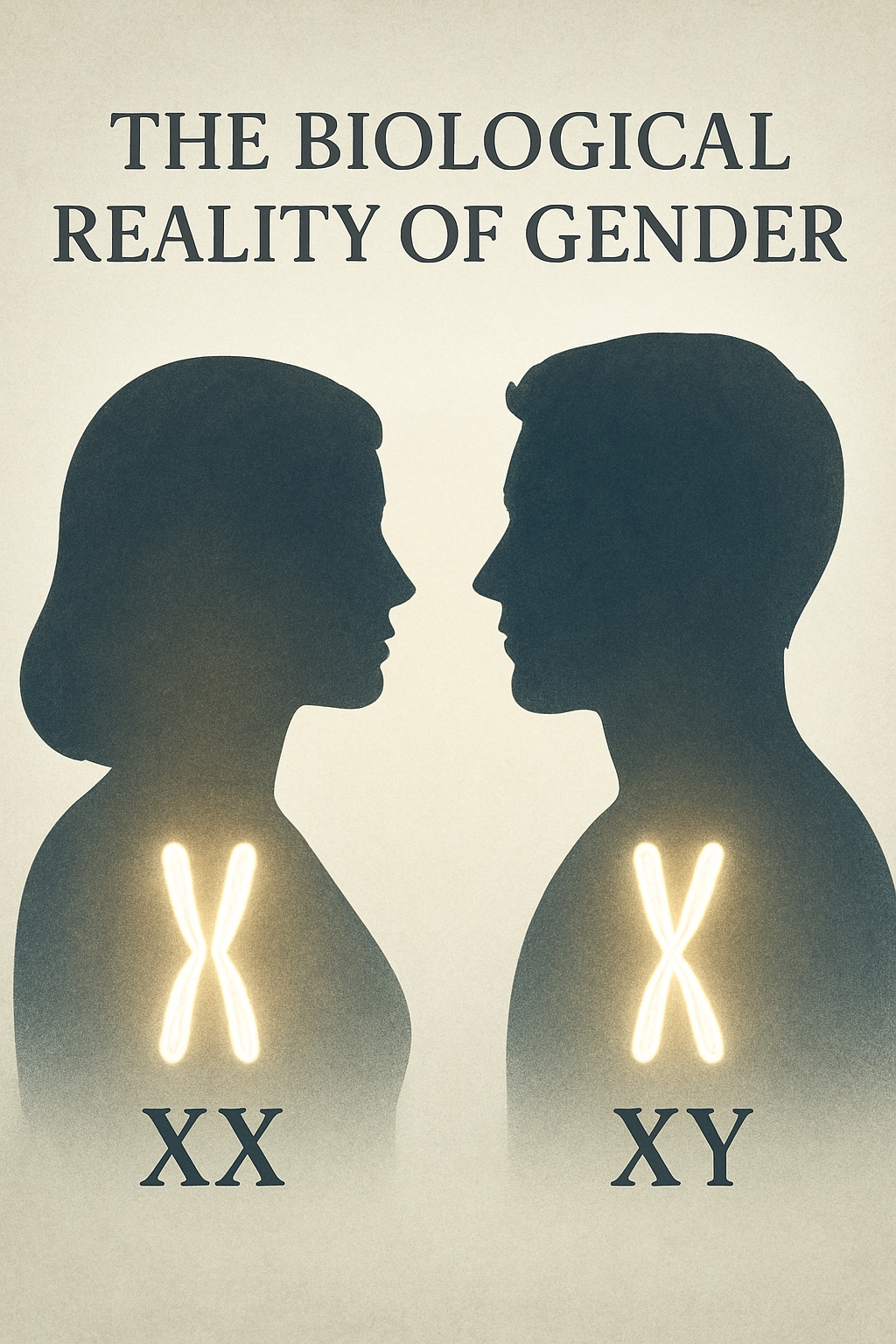The Biological Reality of Gender: Male and Female Only
Theme, Aim, and Scope
This article addresses a pressing modern debate: whether gender extends beyond the biological categories of male and female. The aim is to establish clarity on the matter by drawing upon biological, historical, and social understanding. The scope covers physical characteristics, chromosomal realities, intersex conditions, and the rise of gender identity confusions, while emphasising compassion for individuals with sexual development disorders without inventing a “third sex.”

Introduction
In the age of rapid social change, one debate has stirred emotions more than most: gender identity. Activists argue that gender is fluid, a matter of self-perception rather than biology. But biology, anatomy, and chromosomal science offer a very different conclusion: there are only two genders—male and female. This is not merely a cultural or religious view; it is rooted in observable, measurable facts of life.
At the same time, society must deal with individuals born with certain sexual defects or developmental differences. Their dignity and integration are vital. However, creating an entirely new category of “third sex” is scientifically unsound and socially destabilising. The challenge, therefore, is to balance clarity with compassion.
The Biological Basis of Sex
From the moment of conception, human life is determined by chromosomal makeup.
- Males carry an XY chromosome pattern.
- Females carry an XX chromosome pattern.
This fundamental difference guides everything from reproductive anatomy to hormonal development. Male and female bodies are not just socially constructed categories—they are distinct biological realities observable under a microscope, in reproductive systems, and in the capacity for procreation.
Chromosomes and Anatomy
The Y chromosome contains the SRY gene, which triggers the development of testes, leading to male physical characteristics. Without it, the embryo naturally develops into a female. Hormones such as testosterone and estrogen shape secondary sexual traits like muscle mass, voice, hair distribution, and menstruation.
The entire human species depends on this binary for survival. Without the biological male-female complement, reproduction would be impossible.
Understanding Intersex and Sexual Development Disorders
Some individuals are born with genetic or hormonal conditions that affect sexual characteristics. These conditions, often called Disorders of Sex Development (DSDs), include:
- Turner Syndrome (XO): Female characteristics with infertility.
- Klinefelter Syndrome (XXY): Male characteristics but with reduced fertility.
- Androgen Insensitivity Syndrome (AIS): Genetically male (XY) but body resists male hormones, developing female traits.
While these conditions can blur outward physical appearance, they do not represent a “third sex.” They are medical variations within the male-female framework. Just as people can be born with heart defects without suggesting a “third type of heart,” sexual development conditions are medical exceptions, not the basis for redefining humanity’s sexual structure.
The Rise of Gender Identity Confusions
In recent decades, Western societies have witnessed a growing shift from biological definitions to self-declared identities. Terms like transgender, non-binary, and gender-fluid have gained popularity. Media, pop culture, and activism push the idea that gender is purely psychological, independent of biology.
However, identity cannot override biology. A male who identifies as female still carries XY chromosomes, male muscle mass, and cannot menstruate or give birth. A female identifying as male cannot produce sperm. Science remains unmoved by feelings.
What has changed is not biology, but social narratives. Confusion grows when society prioritizes subjective identity over objective reality. This confusion then trickles into law, education, and family structures, often leaving ordinary people unsure how to respond.
Social and Cultural Implications
The creation of a so-called “third gender” undermines both clarity and stability in society. It destabilises family structures, educational norms, and religious teachings that recognise male and female as complementary. Children, especially, become vulnerable when bombarded with narratives that gender is a matter of choice rather than biology.
Yet, ignoring or ridiculing people with real medical or psychological struggles is equally harmful. They require empathy, counselling, and medical support—not social engineering projects that redefine gender.
Cultures throughout history—from Greeks to Persians to Arabs—recognised only two sexes, though they acknowledged rare physical anomalies. No civilisation built a legal or social category for a “third sex.” The modern attempt is an artificial social construct.
A Balanced Approach: Clarity with Compassion
The path forward must hold two truths together:
- Biological Reality: There are only two genders—male and female—based on chromosomes and anatomy.
- Human Dignity: Individuals with developmental conditions or psychological struggles deserve respect, compassion, and opportunities for integration.
This means rejecting ideological pressures to invent a third sex, while also rejecting cruelty, exclusion, or discrimination against people born with medical differences. The real challenge is not erasing biological truth but extending human kindness without compromising clarity.
Conclusion
At its core, the debate is simple: life comes in male and female. That has been the reality for all of human history and remains the foundation of biology, reproduction, and society. The introduction of a “third gender” is not rooted in science but in ideological confusion.
Yet, compassion must not be forgotten. People with DSDs or those struggling with gender identity need understanding and inclusion. But solutions should focus on integration within the male-female framework, not the creation of an artificial third category.
Society must hold on to clarity while practising empathy. Anything else will create more confusion, weaken family structures, and ultimately harm future generations.
Recommendations
- Promote Biological Literacy: Schools and colleges must teach basic chromosomal and reproductive science clearly.
- Support Individuals with DSDs: Provide medical care, counselling, and social support without redefining gender.
- Protect Children from Confusion: Limit exposure to ideologically driven gender narratives in media and education.
- Encourage Respectful Dialogue: People struggling with gender identity must be treated with dignity, not hostility.
- Strengthen Family and Religious Values: Reinforce the understanding that male and female are complementary, not interchangeable.

